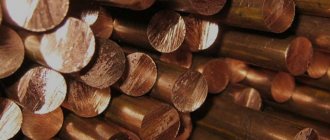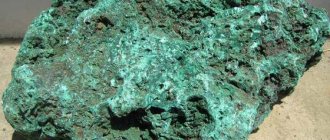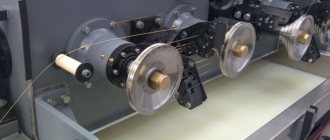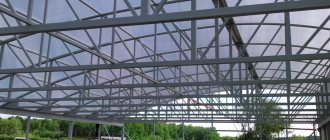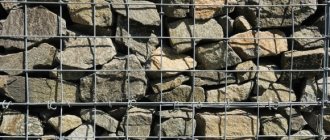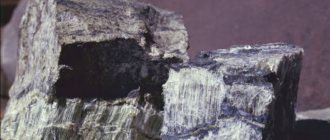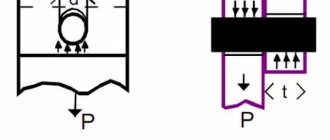Application for product/service
A copper electrical busbar is a rolled metal product with excellent conductivity and good operating parameters.
In terms of its structure, an electrical copper busbar is a strip made of high-purity copper, or made from intertwined conductors with a round cross-section. These two forms are the most popular.
Copper busbars are blanks for the manufacture of all kinds of auxiliary and fastening parts that are used in energy saving systems. At the same time, they are also used in many industries, radio engineering and domestic construction.
A metal such as copper has excellent thermal and electrical conductivity. At the same time, it has high corrosion resistance and attracts many with its technological qualities. Rolled copper, including copper strip and tape, is characterized by excellent ductility and is susceptible to any type of welding. This material can be reused after disposal.
Excellent ductility, high melting temperature and acceptable electrical resistivity make it possible to produce a separate type of non-ferrous rolled metal - copper electrical busbar. It is often used in the manufacture of modern elements for electrical equipment and many electrical parts.
Characteristics of copper bars
Electrical copper busbars are produced in accordance with GOST 434-78 and TU 48-0814-105-2000 from copper alloys marked M0b, M1 or M2, the chemical composition of which is regulated by GOST 859-2001.
Today, there are about 20 copper markings, and for the production of rolled products from this raw material, only high-quality brands are used, characterized by a high metal content in their composition.
GOST 24231-80 regulates the process of sampling and preparing samples of material to determine its chemical composition.
You can buy electrical copper busbars in coils or in strips 2 to 4 meters long. The cross-sectional shape of the copper busbar is similar to copper strip, but is thicker.
Main dimensions of the copper bus:
• Width: from 15 mm to 120 mm;
• Length: from 2 m to 6 m;
• Thickness: from 3 mm to 30 mm.
The weight of a copper busbar depends on its thickness, width and length. For example, the weight of one linear meter of an electrical copper bus 50x5 is 2.23 kg, 40x4 is 1.43 kg, 100x10 is 8.91 kg, 120x10 is 10.69 kg, and the weight of a copper bus 15x3 is only 400 grams.
The copper bus has good ductility, high resistance to corrosion processes, thermal and electrical conductivity.
The grade of rolled metal indicates the purity of the alloy, its alloying elements and indicates the features of manufacturing methods.
Copper bus M0b (oxygen-free)
A copper busbar marked M0b is a strip made from an alloy of oxygen-free copper that does not contain impurities, or contains them, but in very small quantities. This product lends itself well to heat treatment, all kinds of welding and high-temperature soldering.
Copper bars M1 and M2
Busbars made of copper marked M1 or M2 are made from raw materials containing oxygen and requiring special conditions for processing by welding or soldering. These products are susceptible to deformation in a hot or cold state and are highly wear-resistant after a long time of use.
Depending on the condition of the material, you can buy a hard copper electrical busbar - ShMT, or a soft copper bus - ShMM.
COPPER ELECTRICAL BUS in Moscow
A copper electrical busbar is a strip made of high-purity copper or made from intertwined conductors with a round cross-section. These two forms are the most popular.
Copper busbars are blanks for all kinds of auxiliary and fastening parts used in energy saving systems. Copper buses are also used in many industries, radio engineering and household construction.
Copper is known to have excellent thermal and electrical conductivity. At the same time, it has high corrosion resistance and attracts with its technological qualities. Excellent ductility, high melting temperature and acceptable electrical resistivity make it possible to produce a separate type of non-ferrous rolled metal - copper electrical busbar. It is this material that is often used in the manufacture of modern electrical equipment and many electrical parts.
Copper busbar marking
For example, ShMM 8.00x40.00 or ShMT 60x8:
- the first two letters ШМ – copper busbar;
- the third letter indicates the hardness of the raw material: M - soft, T - hard;
- The numbers indicate the cross-sectional dimension in millimeters.
In the case when the product is made from oxygen-free copper, a fourth letter B is added to the designation.
Characteristics of copper bars
Electrical copper busbars are produced in accordance with GOST 434-78 from copper alloys marked M0b, M1 and TU 48-0814-105-2000 from M2, the chemical composition of which is regulated by GOST 859-2001. The grade of rolled metal indicates the purity of the alloy, its alloying elements and indicates the features of manufacturing methods.
You can buy electrical copper busbars from TsvetMetSnab LLC in Moscow in coils or strips 2-6 meters long. The cross-sectional shape of the copper busbar is similar to copper tape, but is thicker.
Main dimensions of the copper bus:
- Width: from 15 mm to 120 mm;
- Length: from 2 m to 6 m;
- Thickness: from 3 mm to 30 mm.
During production, the corners in the cross section of the product are necessarily rounded.
The weight of a copper busbar depends on its thickness, width and length. For example, the weight of one linear meter of electrical copper bus 50x5 is 2.23 kg, 40x4 is 1.43 kg, 100x10 is 8.91 kg, 120x10 is 10.69 kg, and the weight of a meter of copper bus 15x3 is only 400 grams. The copper bus has good ductility, high resistance to corrosion processes, thermal and electrical conductivity.
Solid copper bar
Hard copper bars are used less often than soft ones. They are made from a regular copper alloy and have lower conductivity compared to soft busbars. The CMT copper busbar is applicable in areas that require the provision of a durable and immovable busbar.
Soft Copper Bar (Flexible)
Due to its operational parameters, the soft copper bus ShMM has gained wide popularity in a wide variety of industries: from aircraft manufacturing and the metallurgical industry to household and space applications.
In these areas, soft grades of copper M1, M1M, M2, etc. are used. Busbars made of copper marked M1 or M2 are made from raw materials containing oxygen and requiring special conditions for processing by welding or soldering. These products are susceptible to deformation in a hot or cold state and are highly wear-resistant after a long time of use.
Copper bus M0b made of oxygen-free copper
A copper bus marked M0b made of oxygen-free copper (SHMTV) is a rolled metal product made from a copper alloy that does not contain oxides. Today, all leading manufacturers use this copper to manufacture their products, since it has a number of advantages in comparison with copper of other brands. Oxygen-free copper lends itself well to temperature treatment, all kinds of welding and soldering at high temperatures; when heated, evaporation does not occur, and is less brittle and breakable. But the price of oxygen-free copper busbars is very high.
The advantages of electrical copper busbars, thanks to which they have become popular as auxiliary raw materials for electrical engineering:
- convenient and easy to install and dismantle;
- have design versatility;
- are distinguished by flexibility, allowing copper products to retain all positive parameters in a state of deformation;
- they need high temperatures for their melting (more than 1000 degrees Celsius), therefore they are fireproof to a certain extent;
- are characterized by ductile strength;
- have anti-corrosion properties;
- durable;
- in the production of copper busbars, copper alloys of category M1 (99.9% copper composition) are used with the presence of alloying elements, often titanium, which increase the ductility of the finished products;
- On the market for this product there are electrical busbars made of copper, which are absolutely prepared for electrical installation work in a narrow field, i.e. They have special ends with holes for universal fastenings and factory insulation, which provides the required safety indicator for certain systems.
Advantages of electrical copper busbars
Basically, buses, cables and wires are made from metals such as copper or aluminum. But qualified electricians give preference exclusively to copper conductors, since, in comparison with aluminum busbars, they have a higher level of mechanical strength and have good flexibility, which makes installation work easier. At the same time, copper busbars are easily connected to other copper conductors and are not subject to oxidation.
Application of copper bars
Copper busbars are often used for mounting busbars or trolleys. Finished products make it possible to save electricity, are lightweight, durable and highly durable in use. Copper bars are used in all kinds of electrical installations. For example, in low-voltage equipment - for coupling with electrical circuits.
In high-voltage equipment they can be used in areas requiring low reactive and active circuit resistance.
Tires made of oxygen-free copper are used for the production of space and vacuum equipment. They form the basis of switchgear, linear accelerators, superconductors and electronic devices. These copper products are popular and indispensable in the field of microelectronics, nuclear energy, construction and jewelry production.
offers to buy an assortment of copper bars from a warehouse in Moscow and to order. By phone (495) 410-53-42
You can order not only rolled copper metal, but also cutting or cutting services, and also discuss the terms of delivery of goods to your site.
Find out the cost
Oxygen-free copper bus bar
Oxygen-free copper busbar (OFC) is a rolled metal product made from a copper alloy that does not contain oxides. Today, all leading manufacturers use this copper to manufacture their products, since it has a number of advantages in comparison with copper of other brands. Oxygen-free copper does not require special conditions for heat treatment; when heated, evaporation does not occur, and is less brittle and breakable. But the price of oxygen-free copper tires is unreasonably high.
Rolled metal has a clean surface, smooth cut edges without bending the side edges and obvious burrs. Usual finishing quality and normal production accuracy in width and thickness, matte and smooth surface.
Electrical copper busbars have a number of advantages, thanks to which they have become popular and are used as auxiliary raw materials for electrical engineering:
— they are convenient and easy to install and dismantle;
— have structural versatility;
— characterized by flexibility, allowing copper products to retain all positive parameters in a state of deformation;
- need high temperatures for their melting (more than 1000 degrees Celsius). This guarantees a certain fire safety;
- characterized by ductile strength;
— have anti-corrosion properties;
- durable;
— in the production of copper busbars, copper alloys of category M1 (99.9% copper composition) with the presence of alloying elements, often titanium, are used, which increase the ductility of the finished products;
— on the market for this product there are electrical busbars made of copper, which are absolutely prepared for electrical installation work in a narrow field. They have special endings with holes for universal fastenings and factory insulation, which provides the required safety indicator for certain systems.
Main grades of copper for manufacturing
Pure copper-based alloys are used for production. According to GOST, the content of third-party elements should be less than 1%. Why such strict requirements? The thing is that third-party elements (even in small quantities) significantly worsen the electrical properties of copper. They reduce electrical conductivity, significantly increase resistance to electric current (which leads to unnecessary and even dangerous heating of the material), increase the likelihood of physical cracking, and so on.
Most often, the composition of a copper conductor includes various metal impurities - iron, silver, tin, zinc and others.
Copper grades
- M0b. This grade is copper that has been purified by a high-precision refining method. The total concentration of copper in the alloy is 99.96-99.98%. Contains a minimal amount of oxygen (on average 0.005%, but not more than 0.01%). In small quantities, the alloy may contain iron, phosphorus, arsenic, antimony, zinc and other elements.
- M1. This copper is the result of remelting cathodes under normal atmospheric air conditions. The total concentration of copper in the alloy is 99.9%. The oxygen content is 0.005-0.01%. May contain zinc, sulfur, lead, nickel, tin, antimony, and iron in very small quantities. Please note that in addition to the M1 variety, there is also an M1E variety. These brands are identical in chemical composition and physical properties. The only difference is that copper must be tested for electrical conductivity before use.
- M2. This copper is obtained by melting scrap (various rods, fragments of sheets, microcircuits, wires, and so on). The total copper concentration in the alloy is 99.7%. The brand may contain oxygen in a concentration of 0.007-0.008%. In addition to oxygen, the alloy may contain some other elements - antimony, lead, sulfur, arsenic, silver, zinc.
Advantages of electrical copper busbars
Basically, buses, cables and wires are made from metals such as copper or aluminum. But qualified electricians give preference exclusively to copper conductors, since, in comparison with aluminum busbars, they have a higher level of mechanical strength and have good flexibility, which makes the work of installing copper conductors easier. At the same time, they are easily connected to other conductors (made of copper) and are not subject to oxidation.
Although the aluminum alloy has characteristics approximately similar to copper, it is susceptible to oxidation in air, due to which the conductivity of the products deteriorates. Also, if you connect conductors made of aluminum with conductors made of copper or other materials, a galvanic pair is formed. It accelerates the process of corrosion development, which leads to destruction of the conductor. This is the main reason why products made from copper should be used in work, rather than from a cheaper aluminum alloy, especially in contact with a copper conductor.
Grades and impurities in non-ferrous metals
Copper grades, depending on manufacture, differ in the quantitative composition of impurities. If it is a cast metal, then their number is 12. Cathode copper has 19. Ultrapure copper has 22. Their presence affects performance characteristics.
The presence of oxygen, which is present in an amount of 0.001−0.08%, has no effect under normal conditions. It begins to have a detrimental effect only at high temperatures. In this regard, oxygen-free brands are more expensive and are manufactured only to order. The presence of oxygen, lead, zinc or cadmium during soldering at the time of heating leads to the formation of a brittle zone in this place.
The presence of silver at the level of 0.05% has a positive effect. The creep of copper decreases, but this does not affect the electrical conductivity. But this indicator is badly affected by phosphorus, iron, antimony, tin, and arsenic. Their content ranges from 0.001−0.05%. The number of such elements is greater in solid rods and strips. Less in cast billets.
A change in the percentage composition of impurities by 1% leads to a loss or improvement of thermal conductivity by 3%. In this regard, this indicator depends on the manufacturing technology and GOST standards according to which production is carried out.
Dimensions and markings of copper bars
The electrical copper busbar is manufactured in thicknesses from 4 mm to 30 mm and widths from 16 mm to 120 mm. The length of the strips that can be purchased ranges from 2 m to 6 m. During production, it is mandatory to round the corners in the cross section of the product.
The production of electrical copper busbars is based on copper marked M1 or more, where impurities constitute no more than 0.05% of the total mass.
An example of decoding symbols.
ShMM 8.00x40.00:
— the first two letters ШМ – copper busbar;
- the third letter indicates the hardness of the raw material: M - soft material, T - hard;
— numbers indicate the cross-sectional dimension in millimeters.
In the case when the product is made from oxygen-free copper, a fourth letter B is added to the designation.
Product characteristics
Copper electrical busbars are divided into types. Depending on hardness :
- solid. They come from ordinary copper ShMT and oxygen-free copper ShMTV;
- soft. They are designated ShMM and are made from grades M1, M2, M3.
The thermal conductivity of copper is 401 W/m. It is significantly higher than that of steel or aluminum. When operating in dry conditions, tires are virtually free from corrosion.
They lose their stability when placed in a solution of ammonia or ammonium chloride. Oxidation occurs when copper comes into contact with aluminum or zinc.
Regulatory national and interstate standards are as follows:
- GOST 859–2014. Is an interstate standard;
- GOST 434–78. Technical specifications for rectangular tires;
- GOST 18690–2012. Cables. Packaging, labeling and storage.
Application of copper bars
Copper busbars are often used for mounting busbars or trolleys. Finished products make it possible to save electricity, are lightweight, durable and highly durable in use.
They are used in all kinds of electrical installations. For example, in low-voltage equipment, electrical copper busbars are used to connect to electrical circuits.
In high-voltage equipment they can be used in areas that require low reactive and active circuit resistance.
Tires made of oxygen-free copper are used for the production of space and vacuum equipment. They form the basis of switchgear, linear accelerators, superconductors and electronic devices. These copper products are popular and indispensable in the field of microelectronics, nuclear energy, construction and jewelry production.
Supplier: LLC RTG "MetPromStar"
Copper delivery form
Depending on customer requirements, tires can be supplied in the form of strips of 2-6 m or coils in which the length of the product is 10 m.
In this case, the tire forms are:
- Flexible. Used for installation of distribution networks.
- Tough. Used as a cable replacement.
- Wicker. Characterized by a high degree of flexibility. Used in transformer bridges.
- Covered with insulation. Installed in places where aggressive environments are present. If high voltage passes, then two and three-layer busbars are used.
- With perforation. Easy to assemble.
- Round section. Rarely used. Despite the higher strength, there are disadvantages. In addition to the high consumption of material, there are difficulties in soldering and welding.
- With rounded corners. Curvature radii must be present. This is regulated by GOST.
Advantages of ordering ShMT tires from our company
Copper busbars of the ShMT brand are used for grounding buildings for various purposes, as backbone nodes due to their high throughput. It is relevant to use the product as a replacement for a conductive cable. Tires are used in various industries, as well as at the household level.
Our company offers to buy tires made of copper alloys in various sizes. Delivery is carried out from a warehouse in Moscow wholesale and retail. We always have a large stock of products marked ShMT and ShMM. Affordable prices, an extensive range, short delivery times, high quality products are the main advantages of ordering our tires. You can place an order on our website or by phone. Company managers will tell you about the features of each product brand and help you make the right choice.
Source
Advantages of ShMT tires
Our company offers to buy ShMT tires that meet the requirements of GOST. The catalog presents products of multiple non-multiple lengths. The advantages of electrical products include:
- ease of installation and dismantling if necessary. Copper busbars are used in various fields of activity, regardless of external conditions;
- ductility and lightness ensure that the characteristics of the tire remain unchanged under various deformations. Product properties remain unchanged;
- The melting point of copper bars exceeds 1000 degrees. If there is a potential fire hazard, there is no alternative to such electrical products;
- high strength and hardness makes copper alloy bars a universal conductor;
- high resistance to corrosion and oxidation. At high humidity, the use of tires made of copper alloys is the best option;
- The service life of the product is several decades, regardless of the conditions of use.
It is possible to order products in coils or strips. The section width in mm may vary, depending on the brand of product, purpose, and features of use. The length of the strips varies from 2 to 6 meters.
